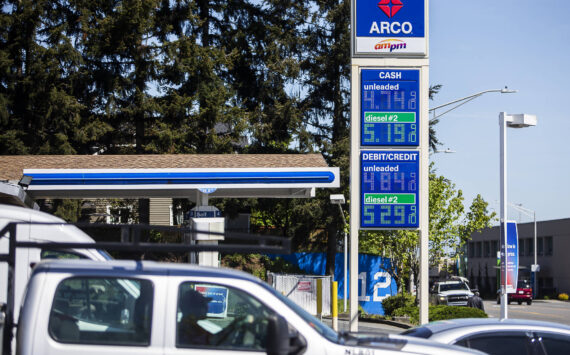The not seasonally adjusted (NSA) national construction unemployment rate was 4.7 percent in September, down 0.5 percent from a year ago and the second lowest September rate on record behind the 4.6 percent rate in September 2000, the U.S. Bureau of Labor Statistics (BLS) reported. Construction unemployment rates were also down in 41 states on a year-over-year basis while rates rose in nine states, according to an analysis released today by Associated Builders and Contractors (ABC). Further, the construction industry employed 173,000 more workers than in September 2016.
Because these industry-specific rates are not seasonally adjusted, national and state-level unemployment rates are best evaluated on a year-over-year basis.
The impact of hurricanes Harvey and Irma began to materialize in the September data. When the data was collected, Texas was in the process of recovering from Hurricane Harvey. As a result, private construction employment rose on an NSA basis, and the state’s estimated construction unemployment rate fell both on a monthly and year-over-year basis. The same was true for Arkansas, Louisiana and Oklahoma. Oklahoma was not hit by Harvey, but it appears likely that some construction workers left the state to help with hurricane recovery in nearby states.
Alabama, Kentucky, Mississippi and Tennessee also felt the impact of Hurricane Harvey, though to a lesser extent. These states also reported a drop in their estimated construction unemployment rates both on a monthly and year-over-year basis. As with Oklahoma, some of the improvement in their rates may have been a result of construction workers leaving their respective states to help with recovery in other states.
The employment data was collected toward the end of Hurricane Irma hitting mainland United States and the early part of the immediate recovery period. As a result, Florida had the largest drop in its private NSA construction employment from the previous month in more than seven years. Its September estimated construction unemployment rate rose from its August rate, but still was down on a year-over-year basis.
“The September drop in the construction unemployment rate for the nation and most states was a positive for the workers in the construction industry. Sadly, some of those gains were the result of repair and rebuilding following the recent hurricanes and wildfires,” said Bernard M. Markstein, Ph.D., president and chief economist of Markstein Advisors, who conducted the analysis for ABC. “Note that the initial hurricane recovery is occurring while many construction projects wind down due to colder weather, particularly in the northern part of the country. This will provide employment for workers who normally would be subject to seasonal layoffs.”
From the beginning of the data series in 2000 through 2016, the month-over-month national NSA construction unemployment rate from August to September has decreased eight times, increased eight times and been unchanged once. This year, the rate was unchanged from August. Among the states, 20 had decreases in their September estimated rate from August, 29 were up and one (Illinois) saw no change.
The Top Five States: The states with the lowest estimated NSA construction unemployment rates in order from lowest rate to highest in September were:
1. Colorado, 2.3 percent
2. Nebraska, 2.4 percent
3. North Dakota, 2.5 percent
4. Idaho, 3.1 percent
5. Massachusetts and Wyoming (tie), 3.3 percent
Four states—Colorado, Idaho, North Dakota and Wyoming—were also among the top five in August. Colorado had the lowest rate among the states. This was an improvement from fourth lowest in August based on revised data (previously reported as the third lowest rate) and its lowest September rate since the beginning of the estimates in 2000.
Nebraska had the second lowest construction unemployment rate in September, up from a tie with Utah for ninth lowest in August. It was Nebraska’s lowest September estimated rate on record. Also, Nebraska had the second largest monthly decline (down 1.1 percent), along with Alabama, Arkansas and Louisiana.
North Dakota had the third lowest construction unemployment rate in September, down from a tie with Wyoming for second lowest in August based on revised data (previously reported as the lowest rate, tied with Idaho).
Idaho ranked fourth lowest in September, down from the lowest rate in August. It was the state’s second lowest September rate on record after last September’s 3 percent rate, matching September 2006’s 3.1 percent rate.
Massachusetts and Wyoming tied for the fifth lowest rate in September. For Massachusetts, that was up from sixth lowest rate in August and the state’s second lowest September rate on record after last September’s 3.2 percent rate. For Wyoming, that was down from a tie with North Dakota for second lowest in August based on revised data (previously reported as the fourth lowest rate). Wyoming also had the fourth largest year-over-year decline, down 1.4 percent, along with Louisiana.
Hawaii fell from fifth lowest rate in August to 15th lowest in September, tied with Georgia and Kansas, with a 3.9 percent estimated NSA construction unemployment rate. Nonetheless, it was the state’s lowest September rate since the 2.8 percent rate in September 2006. Also note that Hawaii’s unemployment rate is a rate for construction, mining and logging combined. The data to estimate a construction unemployment rate alone is not available for Hawaii and Delaware.
The Bottom Five States: The states with the highest NSA construction unemployment rates in order from lowest to highest rates in September were:
46. Pennsylvania and Rhode Island (tied), 6.3 %
47. Illinois, 6.7 percent
48. Connecticut, 6.8 percent
49. New Mexico, 8.2 percent
50. Alaska, 10.4 percent
Four of these states—Alaska, Illinois, New Mexico and Pennsylvania—were also among the five states with the highest construction unemployment rates in August. Since these are NSA construction unemployment rates, now is the time of the year when Alaska has among the highest rates in the nation. Thus, it is no surprise that for the second month in a row Alaska had the highest rate in the nation as well as the largest monthly increase (up 1.7 percent, tied with Rhode Island). Note that the rate is down 0.5 percent from September 2016.
Associated Builders and Contractors (ABC) is a national construction industry trade association established in 1950 that represents more than 21,000 members. Founded on the merit shop philosophy, ABC and its 70 chapters help members develop people, win work and deliver that work safely, ethically and profitably for the betterment of the communities in which ABC and its members work. Visit us at abc.org.
– Associated Builders and Contractors (ABC)








